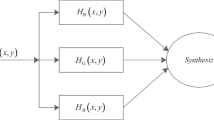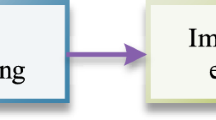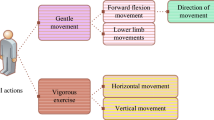Abstract
This research aims to study the goaling recognition methods based on the intelligent analysis of real-time basketball images of the Internet of Things, so as to accelerate the development of basketball and other sports fields. First, the status of basketball-related image recognition and tracking in the field of sports is analysed, which are combined based on the background differencing and inter-frame differencing. Then, an improved image intelligent detection is proposed to identify the basketball goaling, and further analysis of the tracking algorithm related to the moving target is conducted. Finally, an improved Camshift target tracking algorithm is proposed to detect and recognize the basketball goaling. The results show that both background differencing and inter-frame differencing have large errors in basketball goaling recognition. The improved image intelligent detection algorithm in this research can fit the contour of the basketball very well, and the fitting effect of the smallest circle is ideal. From the perspective of basketball goaling trajectory tracking, it is found that the improved Camshift goal tracking algorithm has the best recognition effect on basketball goaling. In addition, the average running time of the algorithm is 209 ms, with favourable accuracy. Therefore, verified by the tests, the intelligent detection algorithm and trajectory tracking algorithm proposed in this research have high recognition accuracy for basketball goaling, and the operation efficiency is ideal, which provides experimental reference for the later intelligent development of sports fields such as basketball.

















Similar content being viewed by others
References
Jing H, Xiaoqiong X (2020) Sports image detection based on FPGA hardware system and particle swarm algorithm [J]. Microprocess Microsyst. https://doi.org/10.1016/j.micpro.2020.103348
Ting DSW, Pasquale LR, Peng L et al (2019) Artificial intelligence and deep learning in ophthalmology [J]. Br J Ophthalmol 103(2):167–175
Nadeem A, Jalal A, Kim K (2020) Accurate physical activity recognition using multidimensional features and markov model for smart health fitness [J]. Symmetry 12(11):1766
Zhong B, Li H, Luo H et al (2020) Ontology-based semantic modeling of knowledge in construction: classification and identification of hazards implied in images [J]. J Constr Eng Manag 146(4):04020013
Lu J, Ma C, Li L et al (2018) A vehicle detection method for aerial image based on YOLO [J]. J Comput Commun 6(11):98–107
Murray NM, Unberath M, Hager GD et al (2020) Artificial intelligence to diagnose ischemic stroke and identify large vessel occlusions: a systematic review [J]. J Neurointervent Surg 12(2):156–164
Khan S, Muhammad K, Mumtaz S et al (2019) Energy-efficient deep CNN for smoke detection in foggy IoT environment [J]. IEEE Internet Things J 6(6):9237–9245
van der Kruk E, Reijne MM (2018) Accuracy of human motion capture systems for sport applications; state-of-the-art review [J]. Eur J Sport Sci 18(6):806–819
Cust EE, Sweeting AJ, Ball K et al (2019) Machine and deep learning for sport-specific movement recognition: a systematic review of model development and performance [J]. J Sports Sci 37(5):568–600
Li G, Zhang C (2019) Automatic detection technology of sports athletes based on image recognition technology [J]. EURASIP J Image Video Process 2019(1):15
Baker LB, Model JB, Barnes KA et al (2020) Skin-interfaced microfluidic system with personalized sweating rate and sweat chloride analytics for sports science applications [J]. Sci Adv. https://doi.org/10.1126/sciadv.abe3929
Chen WJ, Jhou MJ, Lee TS et al (2021) Hybrid basketball game outcome prediction model by integrating data mining methods for the national basketball association[J]. Entropy 23(4):477
Liu A, Xie H, Ahmed K (2021) Fault detection technology of national traditional sports equipment based on optical microscope imaging technology [J]. Alex Eng J 60(2):2697–2705
Bin L, Xiaoyun C (2020) Home intelligent sports action automation system based on bluetooth [J]. Microprocess Microsyst. https://doi.org/10.1016/j.micpro.2020.103335
Yuan B, Li S, Li N (2018) Multiscale deep features learning for land-use scene recognition [J]. J Appl Remote Sens 12(1):015010
Wei H, Jafari R, Kehtarnavaz N (2019) Fusion of video and inertial sensing for deep learning–based human action recognition [J]. Sensors 19(17):3680
Qin L, Kang L (2018) Application of video scene semantic recognition technology in smart video [J]. Tehnički vjesnik 25(5):1429–1436
Olvera-Barrios A, Heeren TFC, Balaskas K et al (2021) Diagnostic accuracy of diabetic retinopathy grading by an artificial intelligence-enabled algorithm compared with a human standard for wide-field true-colour confocal scanning and standard digital retinal images [J]. Br J Ophthalmol 105(2):265–270
Tian Z, Zhan R, Wang W et al (2020) Object detection in optical remote sensing images by integrating object-to-object relationships [J]. Remote Sens Lett 11(5):416–425
Wu ZZ, Wan SH, Wang XF et al (2020) A benchmark data set for aircraft type recognition from remote sensing images [J]. Appl Soft Comput 89(1):106132
Wang Q, Liu S, Chanussot J et al (2018) Scene classification with recurrent attention of VHR remote sensing images [J]. IEEE Trans Geosci Remote Sens 57(2):1155–1167
Batool M, Jalal A, Kim K (2020) Telemonitoring of daily activity using accelerometer and gyroscope in smart home environments [J]. J Elect Engin Technol 15(6):2801–2809
Khan MA, Sharif M, Akram T et al (2020) Hand-crafted and deep convolutional neural network features fusion and selection strategy: an application to intelligent human action recognition [J]. Appl Soft Comput 87:105986
Chen C, Gong W, Chen Y et al (2019) Learning a two-stage CNN model for multi-sized building detection in remote sensing images [J]. Remote Sens Lett 10(2):103–110
Žemgulys J, Raudonis V, Maskeliūnas R et al (2018) Recognition of basketball referee signals from videos using Histogram of Oriented Gradients (HOG) and Support Vector Machine (SVM) [J]. Procedia computer science 130:953–960
Sosale B, Aravind SR, Murthy H et al (2020) Simple, Mobile-based artificial intelligence algorithm in the detection of diabetic retinopathy (SMART) study [J]. BMJ Open Diabetes Res Care. https://doi.org/10.1136/bmjdrc-2019-000892
Li Y, Huang Q, Pei X et al (2020) RADet: Refine feature pyramid network and multi-layer attention network for arbitrary-oriented object detection of remote sensing images [J]. Remote Sens 12(3):389
Wang L, Ding L, Liu Z et al (2020) Automated identification of malignancy in whole-slide pathological images: identification of eyelid malignant melanoma in gigapixel pathological slides using deep learning [J]. Br J Ophthalmol 104(3):318–323
Wu X, Huang Y, Liu Z et al (2019) Universal artificial intelligence platform for collaborative management of cataracts [J]. Br J Ophthalmol 103(11):1553–1560
Lv Z, Li X, Lv H et al (2019) BIM Big Data Storage in WebVRGIS[J]. IEEE Trans Industr Inf 16(4):2566–2573
Xu T, Tang L (2021) Adoption of machine learning algorithm-based intelligent basketball training robot in athlete injury prevention [J]. Front Neurorobot 14:117
Minkin VA, Kachalin AN (2020) Dependence of emotional parameters values on inter-frame difference accumulation in vibraimage system[J]. Modern Psychophysiol Vibraimage Technol 12:139–145
Guo J, Zhang H, Zhen D et al (2020) An enhanced modulation signal bispectrum analysis for bearing fault detection based on non-Gaussian noise suppression[J]. Measurement 151:107240
Sun J, Ding E, Li D et al (2020) Continuously adaptive mean-shift tracking algorithm based on improved gaussian model[J]. J Engin Sci Technol Rev. https://doi.org/10.25103/jestr.135.07
Mao W, Xie H, Tan Z et al (2020) High precision indoor positioning method based on visible light communication using improved Camshift tracking algorithm[J]. Optics Communications 468:125599
Abbasi M, Khosravi MR (2020) A robust and accurate particle filter-based pupil detection method for big datasets of eye video[J]. J Grid Comput 18(2):305–325
Author information
Authors and Affiliations
Corresponding author
Additional information
Publisher's Note
Springer Nature remains neutral with regard to jurisdictional claims in published maps and institutional affiliations.
Rights and permissions
About this article
Cite this article
Liu, N., Liu, P. Goaling recognition based on intelligent analysis of real-time basketball image of Internet of Things. J Supercomput 78, 123–143 (2022). https://doi.org/10.1007/s11227-021-03877-3
Accepted:
Published:
Issue Date:
DOI: https://doi.org/10.1007/s11227-021-03877-3




